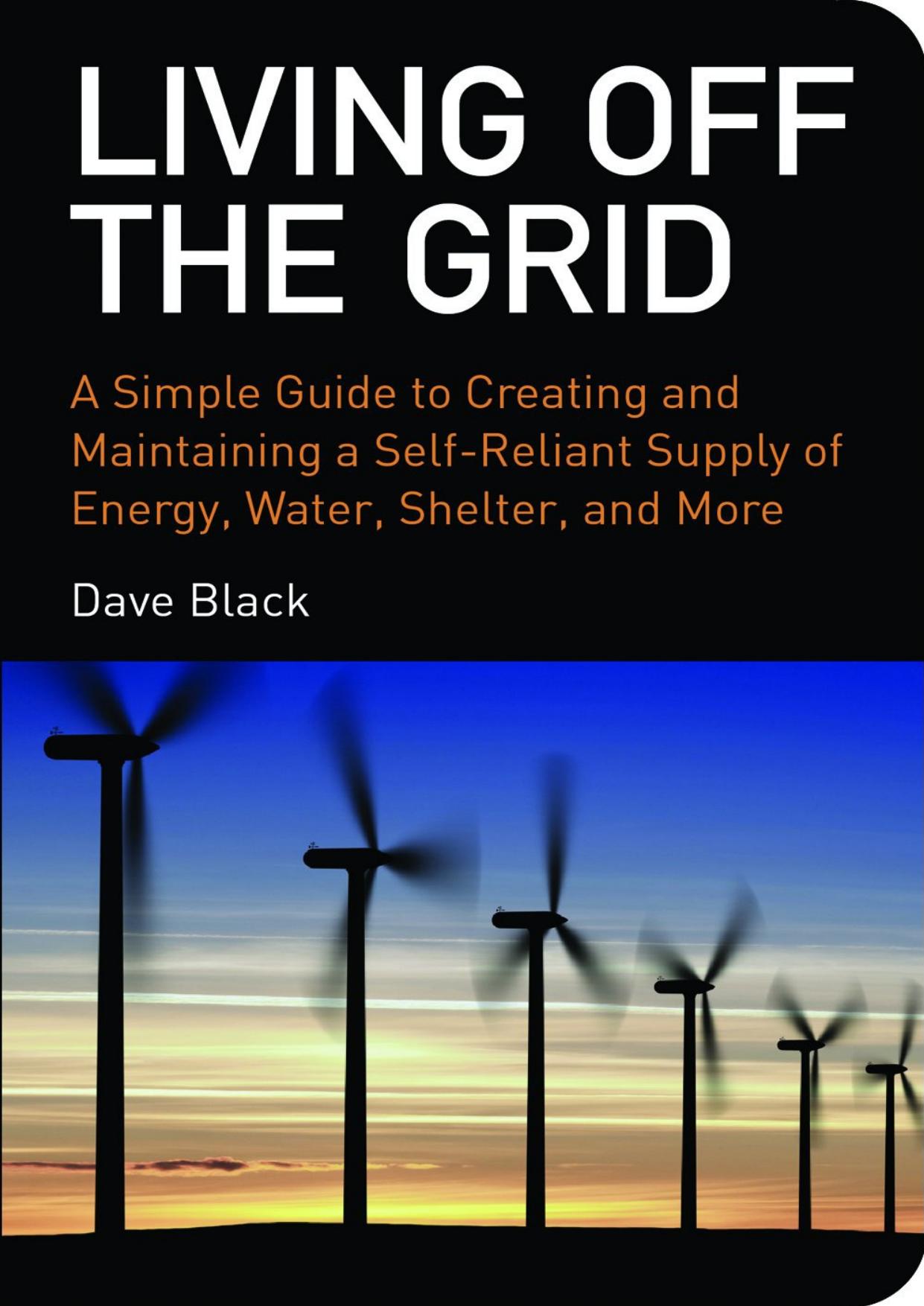Living Off The Grid by Dave Black

Author:Dave Black
Language: eng
Format: epub, mobi, pdf
Publisher: Skyhorse Publishing, Inc.
Published: 2011-01-24T16:00:00+00:00
Testing Your Water
Test any off-grid water before you drink it. If you can’t test it first, you can use a combination of methods to treat and purify it: water treatment tablets from the local sporting goods store, or household bleach (sodium hypochlorite, 3 to 6 percent) at a ratio of 1 teaspoon to 5 gallons of water.
Lab samples for testing for microorganisms, ncluding Giardia cysts, and chemicals need to be fresh (less than twenty-four hours old). Use an independent testing service to do the tests. Comprehensive testing will cost a couple of hundred dollars. The local health department will be able to have the testing done for less, but getting the HD involved may be a mistake. If they shut you down, it could be nearly impossible to get them “uninvolved.”
Water-Source Hygiene
Pay attention to what’s happening around your water source and its watershed. Watch for dead animals, contamination by human sewage, and chemical contamination.
Filter your water. Consider putting a filter/chlorinator system at the well head and installing purifiers on or before the faucets that will be used for drinking and cooking water. When it comes to filters, you generally get what you pay for. Expect to fork out some dollars for a good system and be aware that high-tech filtering systems require periodic filter replacement and water testing.
Water Heating Devices
Storage or tank-type water heaters are the most common in the American home. They are usually 20- to 80-gallon capacity, and fueled by electricity, propane, oil, or natural gas. These units heat up water in an insulated tank and provide a large amount of water for a short period of time. The disadvantage of these units is that they use energy even when not in operation. The life expectancy of a tank is ten to fifteen years, but can be increased by replacing the tank’s internal anode rod.
Heat Pump Heaters
These units use a heater/compressor and refrigerant fluid to transfer heat from one place to another. They are fueled by electricity, but the heat source is warm air in the vicinity of the heat pump. For this reason heat pumps work best in warm climates. They use less electricity because it takes less energy to move heat than to create it. They are available with built-in water tanks called integral units, or as add-ons to existing water heaters. They are expensive and complicated to install, so it’s best to hire a contractor for this job.
Indirect Water Heaters
Indirect water heaters use the home heating system’s boiler. Hot water is stored in a separate insulated tank. Heat is transferred from the boiler via a small circulation pump and heat exchanger.
Disadvantages include the fact that it’s an integral part of the home heating system and that it’s usually easiest to install during new building construction by a contractor.
On-Demand or Tankless Heaters
These heaters only go to work when the water is turned on and reaches a minimum flow rate. A gas flame or heater element switches on, heating water as it passes through a radiator-like heat exchanger.
Download
Living Off The Grid by Dave Black.mobi
Living Off The Grid by Dave Black.pdf
This site does not store any files on its server. We only index and link to content provided by other sites. Please contact the content providers to delete copyright contents if any and email us, we'll remove relevant links or contents immediately.
Doing It: Let's Talk About Sex... by Hannah Witton(9169)
Thirteen Reasons Why by Jay Asher(8761)
The Girl Without a Voice by Casey Watson(7794)
Should I Stay or Should I Go? by Ramani Durvasula(7535)
The Incest Diary by Anonymous(7531)
The Lost Art of Listening by Michael P. Nichols(7377)
The Leavers by Lisa Ko(6893)
The Space Between by Michelle L. Teichman(6829)
The Testaments by Margaret Atwood(6699)
The Four Agreements by Don Miguel Ruiz(6575)
Rich Dad Poor Dad by Robert T. Kiyosaki(6344)
The Rosie Project by Graeme Simsion(6145)
Beartown by Fredrik Backman(5568)
We Need to Talk by Celeste Headlee(5518)
Ego Is the Enemy by Ryan Holiday(5261)
Men In Love by Nancy Friday(5133)
Spare by Prince Harry The Duke of Sussex(5030)
Hunger by Roxane Gay(4850)
Memories by Lang Leav(4724)
